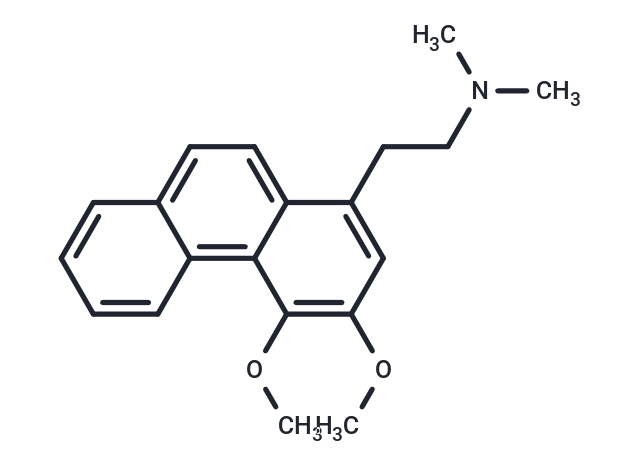Shopping Cart
Remove All Your shopping cart is currently empty
Your shopping cart is currently empty
Atherosperminine shows cholinesterase inhibitory activity against acetylcholinesterase (AChE) and butyrylcholinesterase (BChE). Atherosperminine exerts a non-specific relaxant effect on the trachealis, its major mechanism of action appears to be inhibition of cAMP phosphodiesterase.

| Pack Size | Price | USA Warehouse | Global Warehouse | Quantity |
|---|---|---|---|---|
| 1 mg | $95 | In Stock | In Stock | |
| 2 mg | $143 | In Stock | In Stock | |
| 5 mg | $219 | In Stock | In Stock | |
| 10 mg | $329 | In Stock | In Stock | |
| 25 mg | $562 | In Stock | In Stock | |
| 50 mg | $790 | - | In Stock | |
| 1 mL x 10 mM (in DMSO) | $222 | In Stock | In Stock |
| Description | Atherosperminine shows cholinesterase inhibitory activity against acetylcholinesterase (AChE) and butyrylcholinesterase (BChE). Atherosperminine exerts a non-specific relaxant effect on the trachealis, its major mechanism of action appears to be inhibition of cAMP phosphodiesterase. |
| Targets&IC50 | DPPH:54.53 ug/mL, Antiplasmodial:5.80 μM |
| In vitro | Atherosperminine shows strong anti-plasmodial activity against Plasmodium falciparum, with the IC50 value of 5.80 μM. Atherosperminine also shows antioxidant activity in a DPPH assay with the IC50 value of 54.53 ug/mL[3]. |
| Molecular Weight | 309.4 |
| Formula | C20H23NO2 |
| Cas No. | 5531-98-6 |
| Smiles | O(C)C=1C=2C(C(CCN(C)C)=CC1OC)=CC=C3C2C=CC=C3 |
| Relative Density. | 1.109 g/cm3 (Predicted) |
| Color | Yellow |
| Appearance | Solid |
| Storage | keep away from direct sunlight,store at low temperature | Powder: -20°C for 3 years | In solvent: -80°C for 1 year | Shipping with blue ice/Shipping at ambient temperature. | |||||||||||||||||||||||||||||||||||
| Solubility Information | DMSO: 50 mg/mL (161.6 mM), Sonication is recommended. | |||||||||||||||||||||||||||||||||||
Solution Preparation Table | ||||||||||||||||||||||||||||||||||||
DMSO
| ||||||||||||||||||||||||||||||||||||
| Size | Quantity | Unit Price | Amount | Operation |
|---|

Copyright © 2015-2026 TargetMol Chemicals Inc. All Rights Reserved.